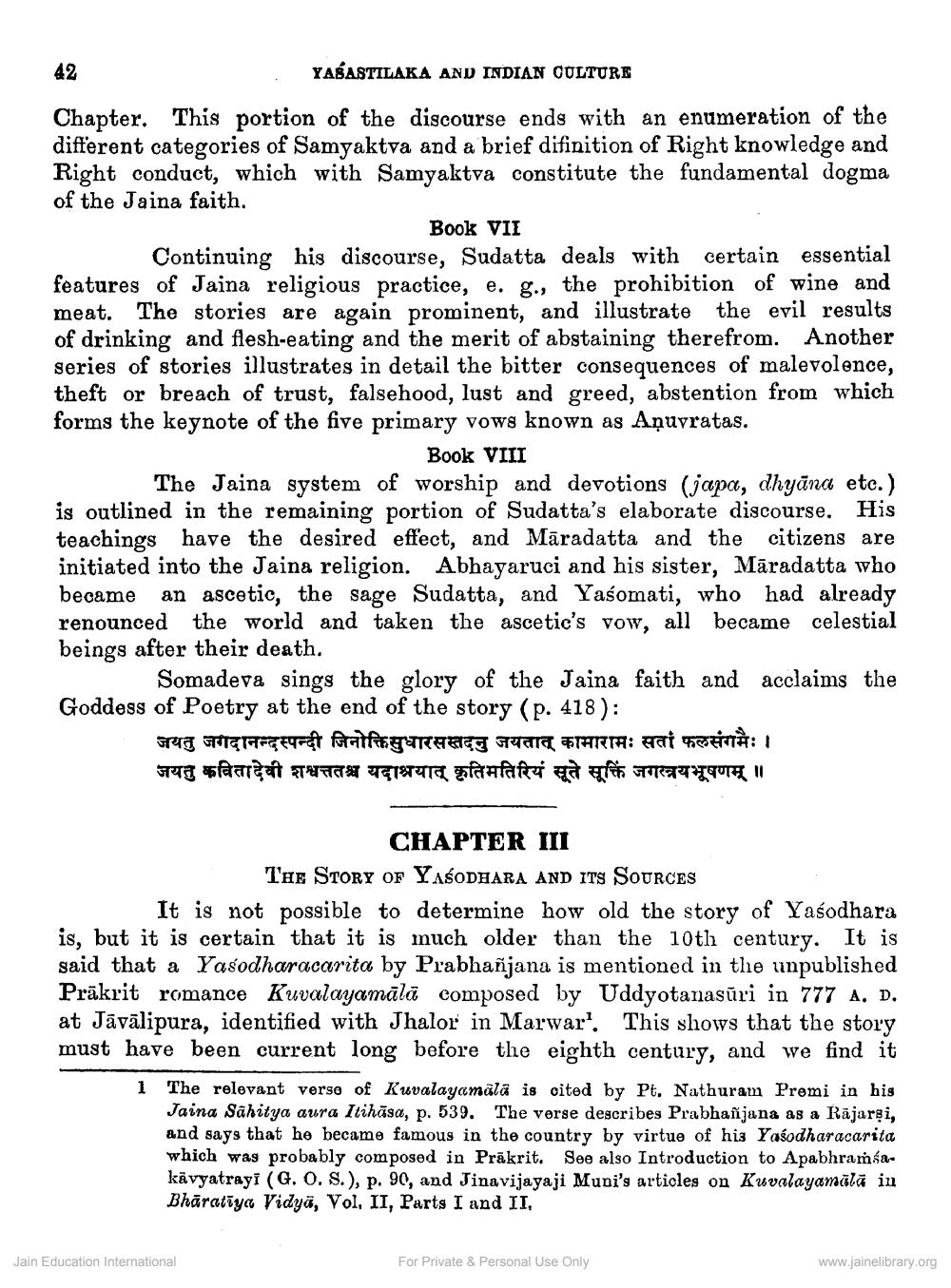________________
YABASTILAKA AND INDIAN CULTURE Chapter. This portion of the discourse ends with an enumeration of the different categories of Samyaktva and a brief difinition of Right knowledge and Right conduct, which with Samyaktva constitute the fundamental dogma of the Jaina faith.
Book VII Continuing his discourse, Sudatta deals with certain essential features of Jaina religious practice, e. g., the prohibition of wine and meat. The stories are again prominent, and illustrate the evil results of drinking and flesh-eating and the merit of abstaining therefrom. Another series of stories illustrates in detail the bitter consequences of malevolence, theft or breach of trust, falsehood, lust and greed, abstention from which forms the keynote of the five primary vows known as Aņuyratas.
Book VIII The Jaina system of worship and devotions (japa, dhyāna etc.) is outlined in the remaining portion of Sudatta's elaborate discourse. His teachings have the desired effect, and Māradatta and the citizens are initiated into the Jaina religion. Abhayaruci and his sister, Māradatta who became an ascetic, the sage Sudatta, and Yasomati, who had already renounced the world and taken the ascetic's vow, all became celestial beings after their death.
Somadeva sings the glory of the Jaina faith and acclaims the Goddess of Poetry at the end of the story (p. 418):
जयतु जगदानन्दस्पन्दी जिनोक्तिसुधारसस्तदनु जयतात् कामारामः सतां फलसंगमैः । जयतु कवितादेवी शश्वत्ततश्च यदानयात् कृतिमतिरियं सूते सूक्तिं जगरनयभूषणम् ॥
CHAPTER III THE STORY OF YASODHARA AND ITS SOURCES It is not possible to determine how old the story of Yasodhara is, but it is certain that it is much older than the 10th century. It is said that a Yasodharacarita by Prabhañjana is mentioned in the unpublished Prākrit romance Kuvalayamālā composed by Uddyotanaşūri in 777 A. D. at Jāvālipura, identified with Jhalor in Marwar. This shows that the story must have been current long before the eighth century, and we find it
1
The relevant verso of Kuvalayamála is cited by Pt. Nathuram Premi in his Jaina Sahitya aura Itihāsa, p. 539. The verse describes Prabhasjana as a Rājargi, and says that he became famous in the country by virtue of his Yaíodharacarita which was probably composed in Prākrit. See also Introduction to Apabhramśakävyatrayi (G. O. S.), p. 90, and Jinavijayaji Muni's articles on Kuvalayamālā in Bhāratīya Vidya, Vol. II, Parts I and II,
Jain Education International
For Private & Personal Use Only
www.jainelibrary.org




